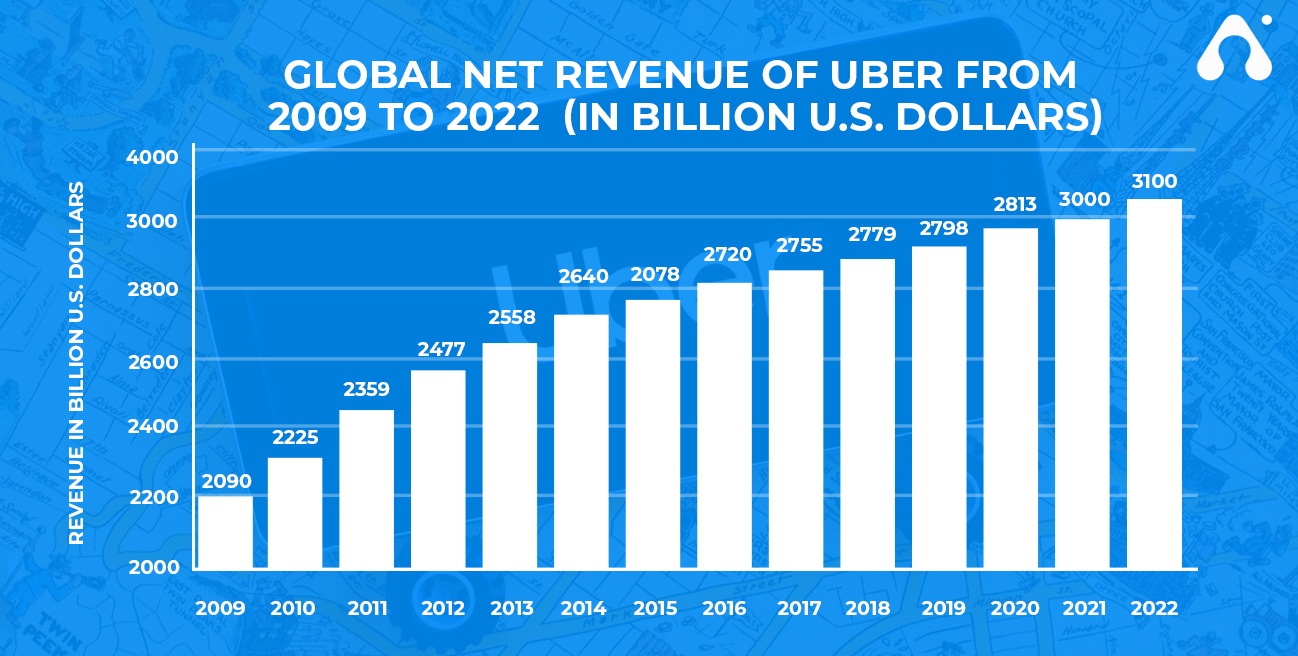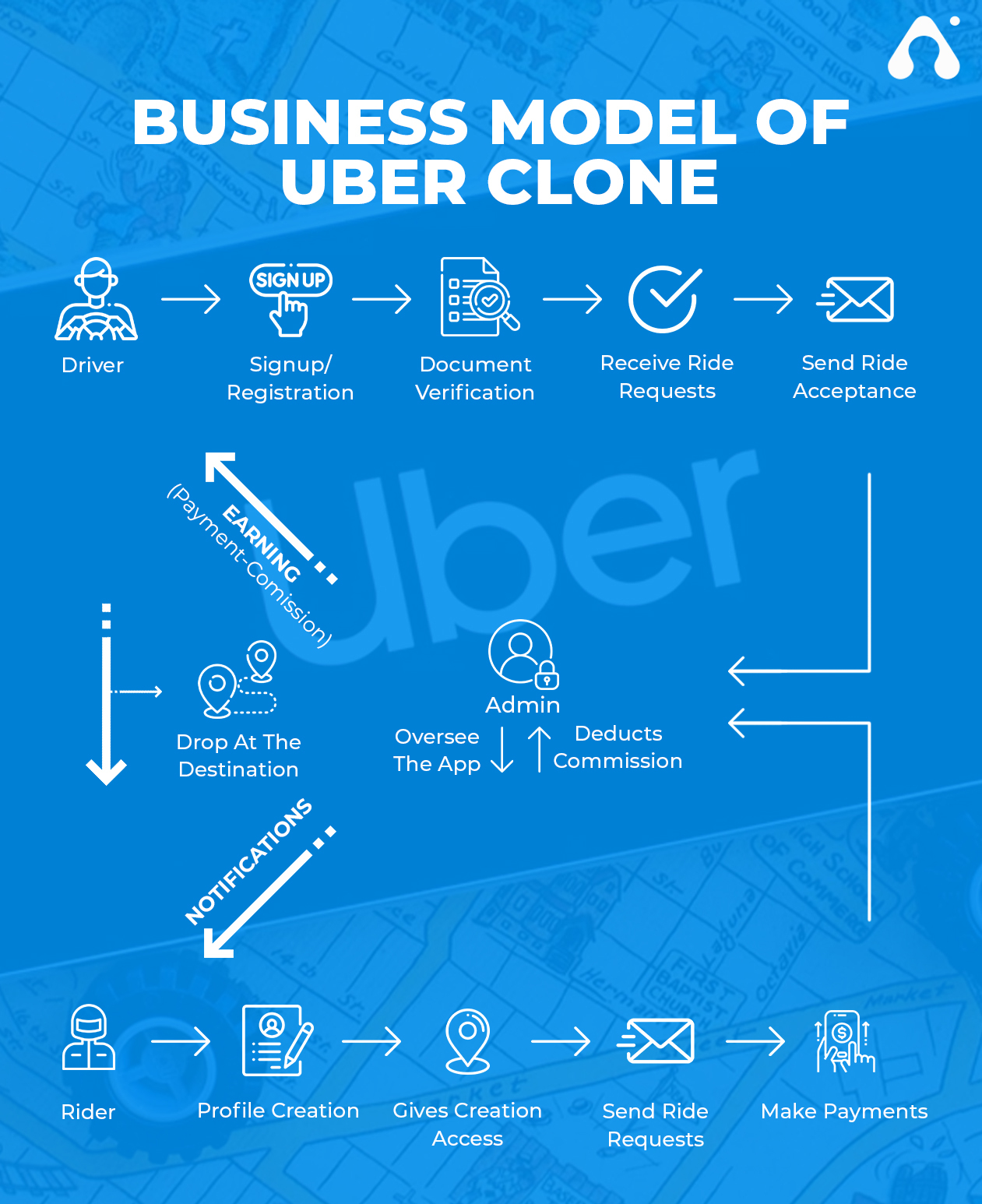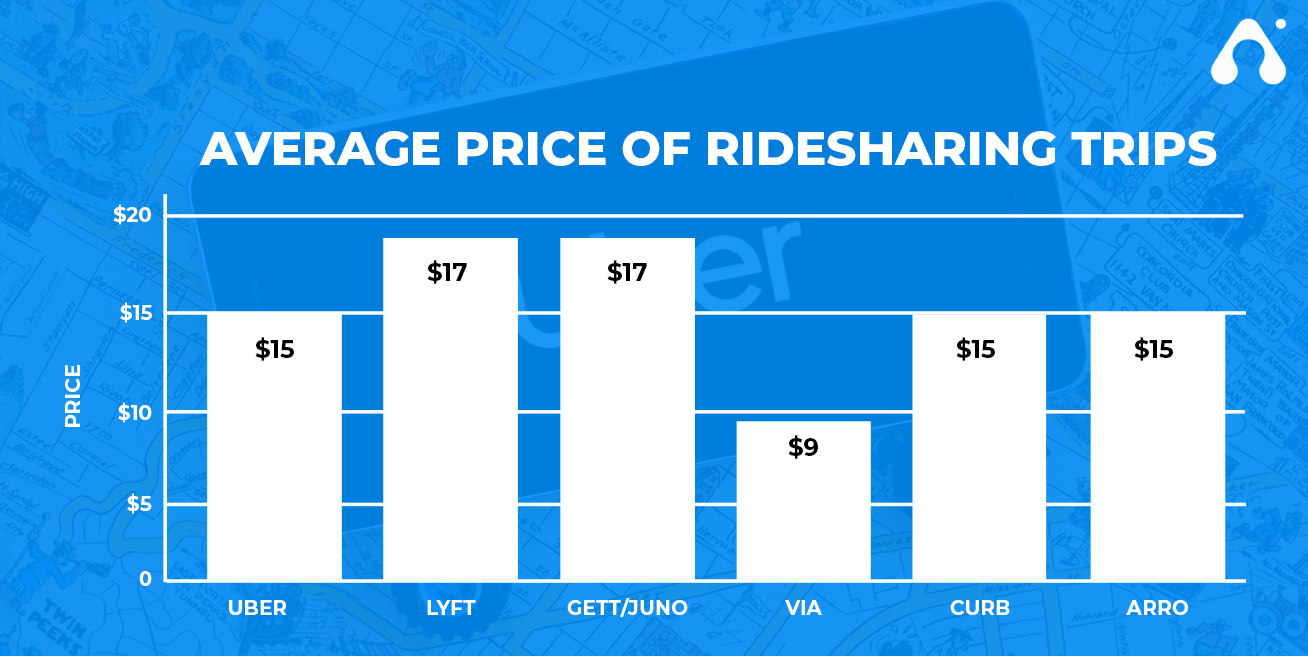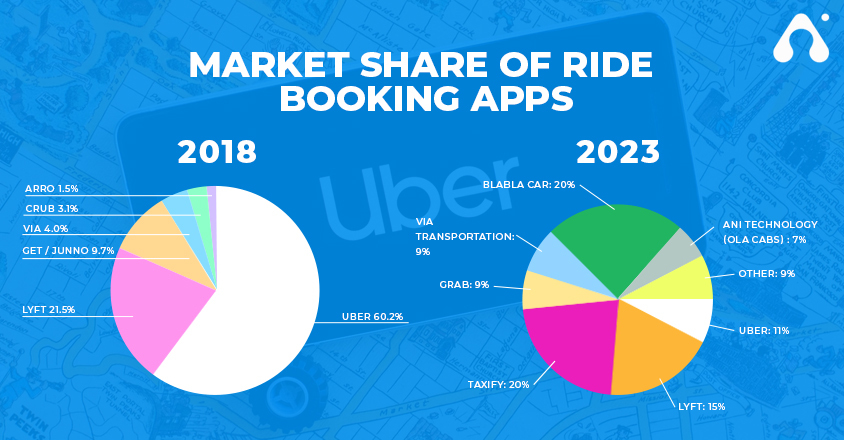The most aggravating thing we’ve all experienced is shouting “Taxi” or waving to hail a cab and seeing it pass right by us. It’s never fun to be stuck in one spot, attempting to hail a cab to get to your destination (for which you are already late). To combat this, Uber, a taxi-booking app, […]
Updated 15 March 2024

Global Delivery Head at Appventurez
The most aggravating thing we’ve all experienced is shouting “Taxi” or waving to hail a cab and seeing it pass right by us.
It’s never fun to be stuck in one spot, attempting to hail a cab to get to your destination (for which you are already late).
To combat this, Uber, a taxi-booking app, has proven to be quite useful, and major taxi firms are developing their mobile apps for taxi booking.
The concept is to provide consumers with an app that allows them to arrange pick-up and drop-off services without having to wait for taxis.
During the COVID-19 crisis, this branch’s revenues plummeted from $302.2 million in 2019 to $192.3 million this year, a 36% decrease. However, such services will weather the storm, with revenues anticipated to reach all-time highs in 2023 ($334.5 million).
The development of the uber-like app depends upon three major components – functionalities, technologies, and recommendations. While developing any application mistakes that should be avoided, let me give you an insight on these to help you build an app for taxi booking.
When it comes to developing mobile taxi booking applications like Uber, there are several components to consider, including the admin panel, the client, and the drivers.
As a result, organizations create distinct applications for consumers, drivers, and administrators.
When designing a taxi booking app that not only attracts customers but also functions for drivers, it is important to follow the structure of a website landing page.
Let me walk you through the fundamental elements of an Uber-like app for users, drivers, and administrators so you can get the feel of it.
In the technological world, an app like uber has a lot of value. This contains a variety of technologies that have helped Uber become a market leader in the cab booking sector.
1- One of the major technologies on which cab services depend is Geolocation which helps in navigation and mapping out the location easily. It is best to know “what programming language does uber use” to develop an app:
2- Another option is Push Notification & Messaging, which adds a technological layer to the app while also improving communication.
The driver may accept the trip with ease, passengers can request a ride, and both parties can cancel the journey.
Even we have to know how notification is sent through firebase which is helpful to both parties in case either party cancels or changes the location. It is best to know “how to make an app like uber in android and iOS” to understand it in a better way.
Apple Push Notification Services is used by iOS and Google Cloud Messaging (GCM) with mobile cloud computing is used to send push notifications.
Apart from sending a push notification, regular message updates are also sent to either party in case one of them (or both) is not in the network range.
3- The final one is the payment gateway integration, which has altered the way we function in the globe.
Secure payment gateways are utilized to address this by simplifying the payment process in a secure manner that can affect the cost of developing an app like Uber.
The Payment gateways have transformed with the technology that is used for online payment mode for users securing the amount and bank details. For Android, Stripe, Google Wallet, Paypal SDKs, and Braintree whereas for iOS Apple Pay, Stripe, Braintree, and PayPal SDKs are used.
If you don’t know then let me tell you, Uber doesn’t have their cars and has registered drivers that offer the service.
It can be considered as a platform that bridges the gap between passengers and drivers while offering them a way to connect and On-demand ride services.
The Uber-like apps are generating revenue as per different criteria such as :
The dynamic principal model is used to generate the revenue and add to surge prices as per driver availability, traffic conditions, holiday seasons, and so on.

It also follows certain monetization methods as well such as:
With its unique economic strategy, Uber has become one of the most popular applications in the technology innovation period. It’s a two-sided marketplace that uses an aggregator approach.

Users must first complete the sign-up procedure by providing their email addresses, phone numbers, or current social media credentials. After that, individuals may make whatever changes they like to their profiles.
They may submit ride requests by providing the pick-up and drop-off locations after completing the basic setup and guaranteeing provided location access.
The passengers’ transportation requests will be sent to the drivers via the app. If a driver accepts the request, the rider will receive a confirmation email. If the driver declines, the request will be sent to a neighboring driver.
The driver will arrive at the pickup place after the ride has been confirmed, and riders will board their rides. Riders may view the route taken by the drivers to reach their destination.
Riders can make a cash or digital payment once they arrive at their destination. The future of the payment industry is continuously changing with technology. You can even solely accept cashless payments to help transactions go more smoothly.
To build passengers’ trust, make it easy for them to provide feedback on the service you’re providing. It entails gathering feedback and ratings on driving conduct.
You can see in the below graph that most of the Taxi service apps charge equal to Uber and yet people are ready to pay more to Lyft, Gett, and Juno (very successful app alternatives to uber) for better services that they provide.

So, what makes Uber-like applications so unique? It just takes five steps to complete the journey, yet these five actions have revolutionized the taxi industry.
The following 5 steps make up the app flow:
The user starts the app, inputs his or her departure and arrival addresses, and selects a payment method. Additional services might also be requested by the user.
When the driver gets the user’s request, he or she can accept the order. In this example, the passenger sees information about the driver and the automobile within the app, including a number, the brand and model of the car, images, and the driver’s rating. In addition, the arrival time and movement of the automobile are indicated on the screen. If the request is rejected, it is assigned to the next driver, and so on.
If you are late, the system keeps track of your downtime. The driver sends a signal to the system as you get into the car, and the tracking begins. You’ll be able to watch where the automobile is headed in real-time.
Passengers may link their credit or debit cards to any taxi app. The passenger is aware of the ride’s cost in advance, and it is deducted when the ride is completed.
Passengers and drivers are both able to post feedback for one another. It acts as a motivator for drivers to pay greater attention to the driving service.
Examine the pie charts. Uber’s dominance over the mobile cab app business is undeniably eroding. That is to say, within the next five years, it will be nothing more than a little blip on the radar. The signs and symptoms have already begun to emerge.

The budget or cost of developing an app like Uber is the most controversial thing that one goes through. Some might offer the development of on-demand service at a minimal price whereas others charge highly for it.
Last but not least, you must determine your budget for developing a taxi app. A simplified version of the app with limited functionality would typically cost between $1,959 and $12,999 to create. The cost would rise regularly depending on the additions.
However, the expenses can be a bit costly depending on the complex processes and payment gateways.
It includes several factors such as:
Apart from this, the development cost includes:
Navigating the highly competitive landscape of the taxi booking app industry can be challenging, especially for newcomers. However, with a distinctive value proposition, a well-defined project vision, and the support of a proficient app development company, nothing is insurmountable.
It is crucial to collaborate with an expert on-demand app development company to ensure the seamless creation of your app, avoiding potential roadblocks. If you find yourself in need of guidance in on-demand app development, we are here to assist. Share your company concept with us, and our dedicated team will strive to transform it into a tangible reality. At our on demand app development company, we understand the intricacies of the industry and are committed to helping your vision take shape successfully.
The ride-hailing sector will see a downturn in 2021 as a result of the Covid-19 problem. We’re getting close to the conclusion of the crisis, and the industry has regained its footing. As a result, developing and launching a taxi app similar to Uber in 2022 will be a terrific decision.
Make the most of it by using the custom-built Uber Clone app, which includes unique features like Covid-19, such as cashless payment, mask verification, safety evaluations & ratings, and more.
Q. How much does it cost to develop an app like Uber?
For one or two user apps (for iOS and Android), the cost of developing an Uber app might be anything between $67,000 to $150,000. You'd also have to factor in the cost of developing an admin panel, which might start at $14,000.
Q. What AI tools & technologies are being used in Uber?
This team employs sophisticated computer vision, automation, Machine Learning (ML), Optical Character Recognition (OCR), and Artificial Intelligence (AI) techniques, as well as NLP and computer vision, to aid in fraud detection, document processing, map editing, machine translations, QA, and other tasks.
Q. Why do people use app-based taxi services?
Less cost, availability, and travel time were cited as the top three reasons for choosing app-based cabs by respondents who preferred personal vehicles and non-app auto-rickshaws, while respondents who preferred personal vehicles and non-app auto-rickshaws cited less cost, availability, and travel time as the top three reasons for choosing app-based cabs by respondents who preferred personal vehicles and non-app auto-rickshaws.


Elevate your journey and empower your choices with our insightful guidance.

Global Delivery Head at Appventurez
Ashish governs the process of software delivery operations. He ensures the end product attains the highest remarks in qualitative analysis and is streamlined to the clientele’s objectives. He has over a decade of experience as an iOS developer and teams mentorship.
You’re just one step away from turning your idea into a global product.
Everything begins with a simple conversation.